calsfoundation@cals.org
Mayflower (Faulkner County)
| Latitude and Longitude: | 34º57’25″N 092º25’38″W | ||
| Elevation: | 288 feet | ||
| Area: | 3.94 square miles (2020 Census) | ||
| Population: | 1,984 (2020 Census) | ||
| Incorporation Date: | March 6, 1928 |
Historical Population as per the U.S. Census:
|
1810 |
1820 |
1830 |
1840 |
1850 |
1860 |
1870 |
1880 |
1890 |
1900 |
|
– |
– |
– |
– |
– |
– |
– |
– |
– |
– |
|
1910 |
1920 |
1930 |
1940 |
1950 |
1960 |
1970 |
1980 |
1990 |
2000 |
|
– |
– |
188 |
165 |
293 |
355 |
469 |
1,381 |
1,415 |
1,631 |
|
2010 |
2020 |
|
|
|
|
|
|
|
|
|
2,234 |
1,984 |
|
|
|
|
|
|
|
Mayflower is a small town eleven miles south of Conway (Faulkner County) and twenty-five miles northwest of Little Rock (Pulaski County) on Interstate 40. Located on the southwestern edge of Lake Conway, Mayflower is known for its fishing. Like many of the smaller towns of Faulkner County, such as Vilonia and Greenbrier, Mayflower offers a rural lifestyle within a short drive of Conway and Little Rock, where many of its residents commute to work.
European Exploration and Settlement
The area’s earliest European settlers were Loyalists, or Tories, who moved west to escape the Revolutionary War. Families such as the Flannagins and Massengills arrived around 1778 and settled near the mouth of Palarm Creek, where they found good soil, ample amounts of water and timber, and game for hunting. Eventually, the land along Palarm Creek and the Arkansas River was homesteaded, and settlers moved north toward the town’s present location.
Civil War through Reconstruction
Mayflower and the surrounding area provided timber for railroad crossties and train steam engines until 1893. In 1870, the Odd Fellows donated their wooden building, located near the site of the town’s present elementary school west of the railroad tracks, to the town to be used as a school. Later, the Woodmen of the World Order built a two-story log building that served simultaneously as their meeting place, a school, a church, and a community center. Richard Nichols (or Knickols), a former Union army officer, became the town’s first school teacher. One-room schools continued to be the norm in the Mayflower area until the early 1930s, when they were consolidated and students were bused into town.
In 1871, the railroad used the town as a telegraph station from the construction superintendent’s Pullman car. He used “Mayflower” as his telegraph call sign, and the name became associated with the town.
Sharecroppers tended cotton plantations in the area, and Mann Nichols constructed a steam cotton gin. More of these machines were later constructed and used in and around the town.
Post Reconstruction through the Gilded Age
The first post office in Mayflower opened on November 9, 1880, with Worley E. Vanlandingham as its first postmaster. Mail and travelers were carried by stagecoach, and people stayed at the inns and hotels in town during trips from Little Rock to Clinton (Van Buren County), forty-nine miles north of Mayflower. The first Methodist church and the first Church of Christ were established in 1880. A Baptist church followed in 1895.
Early Twentieth Century
Aided by the presence of the railroad, Mayflower continued to grow during the early twentieth century. People like Wiley Mosley, who arrived in 1894, built a store that operated in town until 1940. He also donated the land for the town’s first Baptist church. In 1917, Hays Realty Company from Tennessee bought land in Mayflower and began a residential development. Dr. J .R. Kitley, a civic leader who later helped to incorporate the town, came in 1926. A wagon yard, grist mill, blacksmith shop, shingle mill, stave mill, some sawmills, and other businesses, such as John F. Ledrick’s hotel, contributed to the economic life of the town.
Several residents became ill during 1918’s flu epidemic. In 1920, Highway 65, which at that time ran through Mayflower, was completed; resurfaced in 1931, it was diverted through Greenbrier (Faulkner County) in 1942. The railroad continued to make stops at Mayflower until July 21, 1931, when it was closed.
In 1933, a canning kitchen was operated by Gena Hathaway to help farmers preserve food during the Great Depression. A magnolia tree at the corner of Center and Miller streets serves as a historical marker for this operation.
World War II through the Modern Era
In 1951, the 6,700-acre Lake Conway was completed near Mayflower. In 1965, Interstate 40 was constructed through the town. Both of these events promoted the town’s growth by increasing business and tourism. As of the 2000 census, the town’s population was 1,631; its population had increased to 2,234 by the 2010 census.
The town cemetery association is a community project that documents and maintains the grave markers with community support. Twelve graves prior to 1900 can be identified, with the earliest birth date being 1829.
Although many residents of Mayflower commute to either Conway or the Little Rock area to work, the town has several businesses, including Blackhawk Molding Company, a microfilm company, an ironworks shop, and two banks.
On March 29, 2013, an ExxonMobil pipeline running through Mayflower ruptured, spilling 210,000 gallons of oil, according to some estimates, into a subdivision and causing the evacuation of twenty-two homes, as well as damage to the environment and property. The pipeline was transporting the particularly toxic Wabasca Heavy crude from the Canadian tar sands region.
On April 27, 2014, a powerful tornado passed through the Mayflower area, killing three people and destroying numerous structures and vehicles along the interstate.
Attractions
Lake Conway is known for its bass, catfish, bream, and crappie. The Arkansas Game and Fish Commission maintains several free public boat launch areas along the lake. The Bell Slough Wildlife Management Area, south of Lake Conway and accessible by Highway 365, features the Bell Slough Nature Trail, which was completed in the summer of 2000. The area, which is open year round, is used mostly for hunting wintering ducks and for bird watching.
Notable Residents
Pioneering sociologist Gordon Morgan was born in Mayflower.
For additional information:
City of Mayflower. https://cityofmayflower.com/?msclkid=ce1557e0c0e011ec94de6fa847769007 (accessed July 20, 2022).
Faulkner County Historical Society. Faulkner County: Its Land and People. Conway, AR: Faulkner County Historical Society, 1986.
“Mayflower.” Faulkner County Historical Society. https://www.faulknerhistory.org/communities/mayflower/?msclkid=dd28160dc0e011ecaa6d956e3169c7b5 (accessed July 20, 2022).
Aaron W. Rogers
Conway, Arkansas
 Bell Slough
Bell Slough 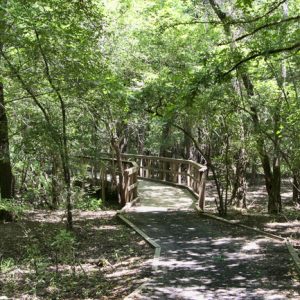 Bell Slough Trail
Bell Slough Trail  Faulkner County Map
Faulkner County Map 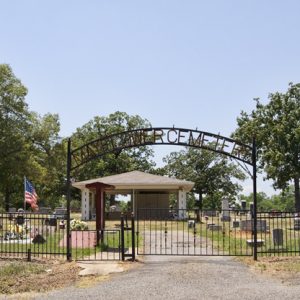 Mayflower Cemetery
Mayflower Cemetery 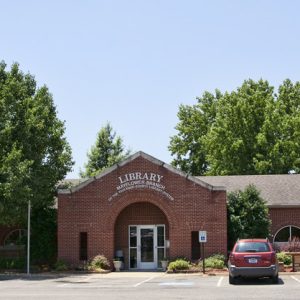 Mayflower Library
Mayflower Library  Mayflower Sign
Mayflower Sign 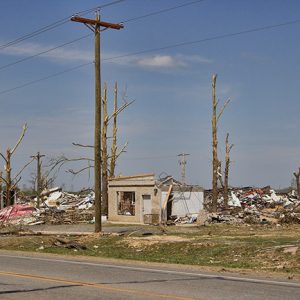 Mayflower Tornado Damage, 2014
Mayflower Tornado Damage, 2014 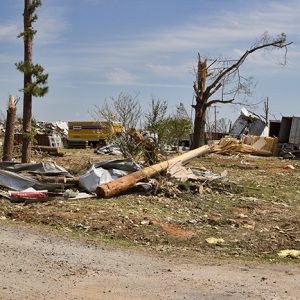 Mayflower Tornado Damage, 2014
Mayflower Tornado Damage, 2014  Mayflower Oil Spill
Mayflower Oil Spill  Palarm Creek Park
Palarm Creek Park 




Comments
No comments on this entry yet.